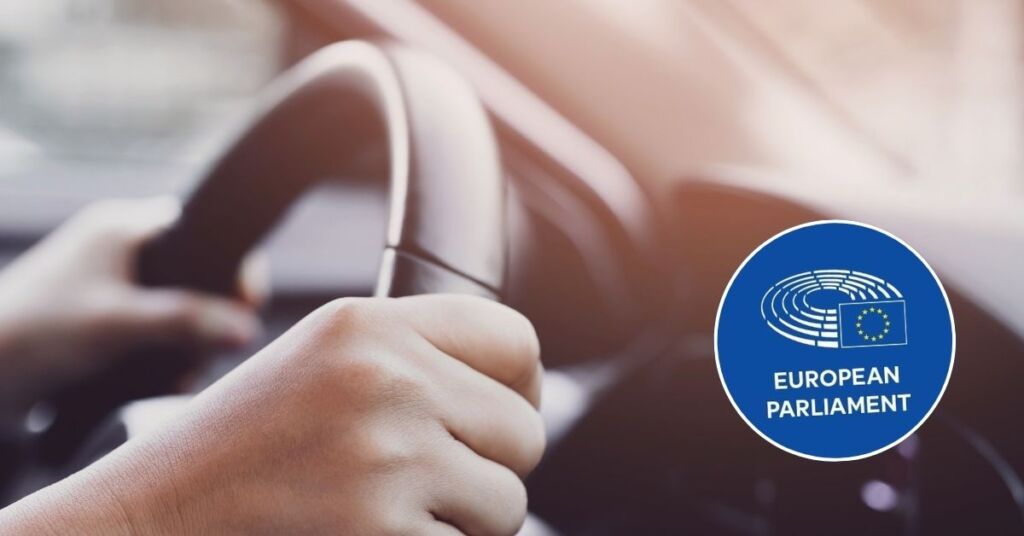19,940 Deaths On Roads Lead To EU To Modernise Driving Rules To Improve Road Safety

The European Parliament has officially approved a major overhaul of the EU’s driving licence rules, introducing digital licences, stricter training standards, and new conditions for young and novice drivers.
The reforms aim to make Europe’s roads safer and reduce the nearly 20,000 deaths that occur every year on EU roads. The new measures form part of the EU’s broader “Vision Zero” strategy, a long-term goal to eliminate road fatalities entirely by 2050.
Under the new rules, driver training will place much greater emphasis on road safety and risk awareness. Learners will now have to demonstrate knowledge about blind spot risks, driver-assistance systems, safe door opening (to avoid endangering cyclists), and the dangers of distractions like phone use.
MEPs also pushed for more awareness of vulnerable road users, particularly pedestrians, children, and cyclists, to make sure new drivers are fully prepared for real-world road conditions.
When it comes to the validity of driving licences, the EU has agreed that licences for motorcycles and cars will be valid for 15 years, although member states can shorten this period to 10 years if the licence also serves as a national ID card. Licences for trucks and buses will be valid for five years.
Older drivers, particularly those aged 65 and over, may be required to renew their licence more frequently or undergo additional medical checks or refresher courses. Before obtaining or renewing a licence, all drivers will need to pass a medical examination, including eyesight and cardiovascular tests. However, countries can choose to replace this with self-assessment forms or similar national systems.
For the first time, the EU will also introduce a mandatory two-year probation period for all new drivers. During this time, stricter penalties will apply for offences such as drink-driving, not wearing a seatbelt, or failing to use a child restraint system. In a major shift, 17-year-olds will be allowed to obtain a car driving licence (Category B), but they must be accompanied by an experienced adult driver until they turn 18.
The rules also aim to ease the shortage of professional drivers across Europe: 18-year-olds will be eligible for a truck licence (Category C) and 21-year-olds for a bus licence (Category D), provided they complete a certificate of professional competence. Without this qualification, the minimum ages remain 21 and 24 respectively.
Another big change is the introduction of a digital driving licence that will be accessible on a mobile phone. The EU intends for this to gradually become the main format across all member states. However, MEPs secured the right for drivers to request a physical card if they prefer, which authorities must issue without undue delay, and generally within three weeks.
The update also tightens rules on cross-border driving disqualifications. If a driver’s licence is suspended, withdrawn, or restricted in one EU country, that decision will now be shared automatically with the member state that issued the licence.
This will ensure penalties apply consistently across borders, especially for serious offences such as drink- or drug-driving, fatal traffic accidents, or excessive speedin, defined as driving 50 km/h over the limit.
Commenting on the new directive, Jutta Paulus (Greens, Germany), the European Parliament’s rapporteur on driving licences, said that by 2030, “the new European Driving Licence Directive will introduce a digital driving licence, while giving citizens full freedom of choice between an app and a physical card.”
She added that the changes will improve safety for pedestrians and cyclists, make it easier for volunteers like firefighters and rescue workers to drive emergency vehicles, and help make transport professions more attractive and accessible. Meanwhile, Matteo Ricci (S&D, Italy), rapporteur on driving disqualifications, called the reform “an important step forward in improving road safety,” adding that clearer and faster rules on suspensions “will help protect not only responsible drivers but the entire community.”
The new directive will take effect 20 days after publication in the Official Journal of the European Union. Each member state will then have three years to transpose the rules into national law and an additional year to prepare for their implementation.
These updates form part of the EU’s Road Safety Package, first presented in March 2023, which aims to improve safety for all road users, from pedestrians and cyclists to professional drivers, and bring the EU one step closer to zero fatalities on Europe’s roads by 2050.
The new rules mark a major step in the EU’s push for safer, smarter, and more modern roads, bringing Europe closer to its goal of zero fatalities by 2050.
What do you think of these regulations?
